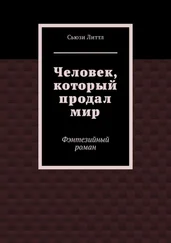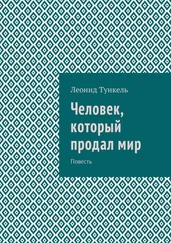As has been well said, 'Asha Gambu's definite refusal to negotiate or compromise provoked the Mongols' devastatingly thorough obliteration of the Tangut state' (Franke & Twitchett, Cambridge History p. 211).
Martin, Rise.
Другое имя — Цзунь-сян. — Прим. пер .
ibid. p. 285.
Franke & Twitchett, Cambridge History pp. 210–211.
Martin, Rise p. 286.
Pelliot, Notes sur Marco Polo I pp. 304–330.
JB I p. 147.
SHC p. 205; SHO pp. 257–258; SHR pp. 196–198.
Krause, Cingis Han p. 39.
Martin, Rise pp. 289–290.
Ksenia Kepping, 'The Name of the Tangut Empire,' T'oung Pao 80 (1994) pp. 357–376; Kepping, 'Chinggis Khan's Last Campaign as seen by the Tanguts,' in Kepping, Recent Articles pp. 172–195.
Vladimirtsov, Genghis p. 185.
Mote, Imperial China p. 257.
JR II pp. 1085–1086.
Meignan, Paris to Pekin pp. 356–357.
For Qara Qoto see Wang & Perkins, Collections of Sir Aurel Stein pp. 42–44; Kozlow, Chara-choto p. 383; John Carswell, 'A Month in Mongolia: Khara-Khoto revisited,' Asian Affairs 29 (1998) pp. 287–298.
RT II p. 261; Franke & Twitchett, Cambridge History p. 211.
RT II p. 261; Franke & Twitchett, Cambridge History p. 211.
Ebrey, East Asia p. 199; Kohn, Dictionary of Wars p. 205; Li, China at War p. 139. There are also some pointers to the devastation in A. P. Terentyev-Katansky, 'The Appearance, Clothes and Utensils of the Tanguts,' in Olderogge, ed., Countries and Peoples pp. 215–244.
Другое название — хунну. — Прим. пер.
Pelliot, Notes sur Marco Polo I p. 315; Yule & Cordier, Ser Marco Polo I Chapter 45.
R. W. Dunnell, 'Locating the Tangut Military Estabishment; Uraqai (Wulahai) and the Heishui Zhenyan army,' Monumenta Serica 40 (1992) pp. 219–234 (at pp. 223–228).
Franke & Twitchett, Cambridge History p. 211.
Martin, Rise p. 300.
Martin, Rise pp. 293–294.
It is surprising that there is no mention of Subedei's important campaign in Gabriel, Subotai.
For the Nan Shan or Qilian mountains see Winchester, Man Who Loved China p. 126. For the Alashan desert see Lattimore, 'Return to China's Northern Frontiers,' Geographical Journal 139 (1973) pp. 233–242.
Martin, Rise p. 293. For the historical importance of Wuwei see Hill, Through the Jade Gate p. 45.
The Nine Fords of the Yellow River feature in what has been described as the most famous love story in Chinese literature, by Wang Shifu; The Story of the Western Wing, p. 118. See also the book review by David L. Rolston, 'The Story of the Western Wing,' The China Quarterly 145 (1996) pp. 231–232.
Pelliot, Notes sur Marco Polo III p. 296; Martin, Rise p. 295.
Pelliot, Notes sur Marco Polo I pp. 315–317; Rachewiltz, Commentary pp. 973–975; Martin, Rise p. 294.
d'Ohsson, Histoire I p. 273.
RT II pp. 261–262; Pelliot, Notes sur Marco Polo I p. 315; II pp. 641–643; Krause, Cingis Han pp. 39–40.
Martin, Rise p. 299.
Herrmann, Atlas of China pp. 42, 44, 47; Yule & Cordier, Ser Marco Polo I pp. 282–283.
SHC p. 207; SHO p. 261; SHR pp. 199–200.
RT II p. 263.
RT II p. 263; Pelliot, Notes sur Marco Polo I pp. 310–315; II pp. 641–642.
Ruth W Dunnell, 'The Fall of the Xia Empire: Sino-Steppe Relations in the Late Twelfth and Thirteenth Centuries,' in Seaman & Marks, Rulers from the Steppe pp. 158–183 (at pp. 178–179).
1368–1644 годы. Основана в результате свержения монгольской династии Юань. — Прим. пер .
Mote, Imperial China pp. 256–257; Franke & Twitchett, Cambridge History p. 214.
For an assessment of the population losses see Boland-Crewe 8t Lea, People's Republic of China p. 215.
Martin, Rise p. 296.
Martin, Rise p. 296.
For the myriad problems engendered by this division of the empire see, in greater detail, RT II pp. 349–350. 535, 583, 649, 654.
JB I p. 119; T. Allsen, 'The Princes of the Left Hand: An Introduction to the History of the Ulus of Ordu in the Thirteenth and Early Fourteenth Centuries,' Archivum Eurasiae Medii Aevi 5 (1987) pp. 5–40.
P. Jackson, 'The Dissolution of the Mongol Empire,' Central Asiatic Journal 22 (1978) pp. 186–244 (esp. p. 193); Fletcher, 'The Mongols,' loc. cit. p. 50.
JR II pp. 1086–1087.
Wittfogel & Feng, Liao pp. 398–400; Ratchnevsky & Aubin, Un code des Yuan III p. lxvi; Ayalon, 'The Great Yasa,' loc. cit. (1971) pp. 151–180; Peter Turchin, Jonathan M. Adams & Thomas D. Hall, 'East-West Orientation of Historical Empires,' Journal of World-Systems Research 12 (2006) pp. 219–229.
Barfield, Perilous Frontier pp. 210–212.
RT II p. 262; SHO p. 15.
Rachewiltz, 'Some Remarks on the Ideological Foundations of Chingis Khan's Empire,' Papers on Far Eastern History 7 (1993) pp. 21–36; Eric Voegelin, 'The Mongol Orders of Submission to the European Powers, 1245–1255,' Byzantion 15 (1941) pp. 378–413.
SHC p. 209; SHO p. 261; SHR pp. 199–200.
Krause, Cingis Han p. 40; Vladimirtsov, Genghis p. 115.
Rachewiltz, Commentary pp. 975–977.
Mostaert, Sur quelques passages pp. 220–225.
Rachewiltz, Commentary p. 995.
JR II p. 1096; JB ip. 180.
Другой вариант имени — Гурбэлджин. — Прим. пер .
Buell, Dictionary pp. 240–241. Rachewiltz refers to 'colourful folklore motifs such as unusual sexual injury caused by the Tangut queen' (Commentary p. 980).
ibid. For an investigation of the possible causes of death see D. C. Wright, 'The Death of Chinggis Khan in Mongolian, Chinese, Persian and European Sources,' in Berta, Historic and Linguistic Interaction pp. 425–433; E. Haenisch, 'Die letzte Feldziige Cinggis Hans und sein Tod nach der ostasiatischen Uberlieferung, 'Asia Minor 9 (1933) pp. 503–551. See also the review of same by Pelliot in T'oung Pao 31 (1934) pp. 157–167.
Читать дальше
Конец ознакомительного отрывка
Купить книгу

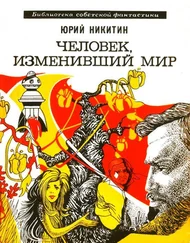

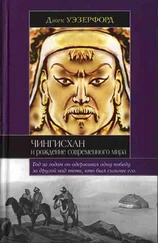
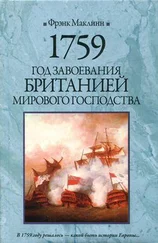

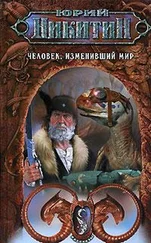
![Ксения Чепикова - Человек, научивший мир читать [История Великой информационной революции]](/books/388624/kseniya-chepikova-chelovek-nauchivshij-mir-chitat-ist-thumb.webp)
